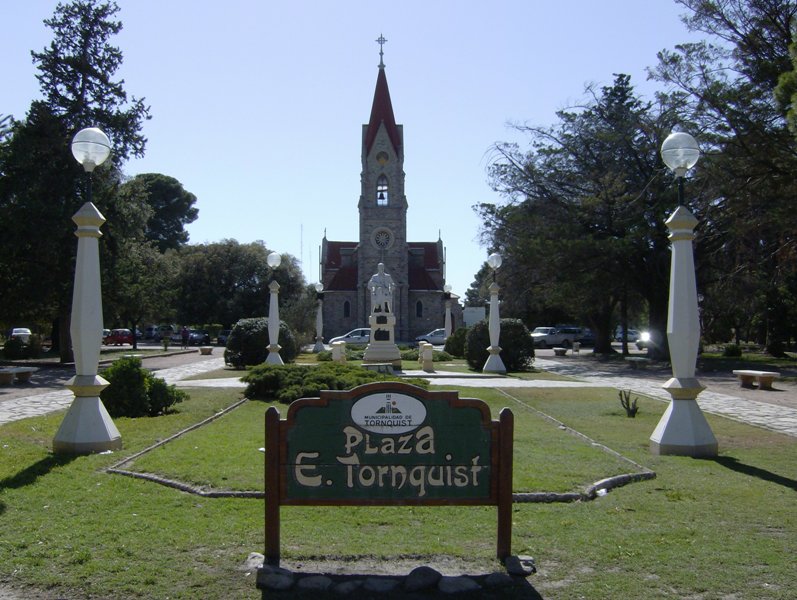Tornquist, Buenos Aires on:
[Wikipedia]
[Google]
[Amazon]
Tornquist is a town in

 The layout of the historic centre, the design of the main square, the layout of its church, and the composition of the landscape, are reminiscent of German towns and architecture, a nod to the origins of the town’s first settlers.
The original plans for the city were prepared by Pablo Mayer, an engineer, whose work was commissioned by the city’s founder himself. The city hall was designed and built by the Italian-Argentine architect Francisco Salamone in the 1930s, under the provincial government of the conservative Manuel Fresco.
The layout of the historic centre, the design of the main square, the layout of its church, and the composition of the landscape, are reminiscent of German towns and architecture, a nod to the origins of the town’s first settlers.
The original plans for the city were prepared by Pablo Mayer, an engineer, whose work was commissioned by the city’s founder himself. The city hall was designed and built by the Italian-Argentine architect Francisco Salamone in the 1930s, under the provincial government of the conservative Manuel Fresco.
Municipal website
Populated places in Buenos Aires Province Populated places established in 1883 {{BuenosAiresAR-geo-stub
Buenos Aires Province
Buenos Aires (), officially the Buenos Aires Province (''Provincia de Buenos Aires'' ), is the largest and most populous Argentine province. It takes its name from the city of Buenos Aires, the capital of the country, which used to be part of th ...
, Argentina. It is the head town of the Tornquist Partido
Tornquist Partido is a partido in the southwest of Buenos Aires Province in Argentina and is named after Ernesto Tornquist, founder of Tornquist, the partido's main city.
The provincial subdivision has a population of about 12,000 inhabitants in ...
.
History
The settlement was founded on 17 April 1883 byErnesto Tornquist
Ernesto Carlos Tornquist (31 December 1842 – 17 June 1908) was an Argentinian entrepreneur and businessman, considered to be one of the most important entrepreneurs in Argentina at the end of the 19th century. The diversified business empire he ...
and was settled by Germans
, native_name_lang = de
, region1 =
, pop1 = 72,650,269
, region2 =
, pop2 = 534,000
, region3 =
, pop3 = 157,000
3,322,405
, region4 =
, pop4 = ...
and Volga Germans
The Volga Germans (german: Wolgadeutsche, ), russian: поволжские немцы, povolzhskiye nemtsy) are ethnic Germans who settled and historically lived along the Volga River in the region of southeastern European Russia around Saratov ...
. Historically, the economy was based on livestock and agricultural production and was later supplemented by a growing tourism sector related to the scenic Ventana System, a minor mountain range of 195 km (121 mi) NW to SE that dominates the flat countryside. The development of the railway favored the city's future and prominent community centers were established along ethnic ties, such as the headquarters of the Germanic Society, the Hogar Funke (a summer home for elderly Germans), and the Barraca Funke.

Urban development
The city’s most important municipal, educational, civic, and commercial activities center around Ernesto Tornquist Plaza. The plaza fully occupies four city blocks and contains a man-made pond on the north end along 9 de Julio Avenue. The Iglesia Santa Rosa de Lima, a neo-Gothic chapel, is situated in the middle of the plaza boasting a singular tower about five storeys tall.External links
*Municipal website
Populated places in Buenos Aires Province Populated places established in 1883 {{BuenosAiresAR-geo-stub